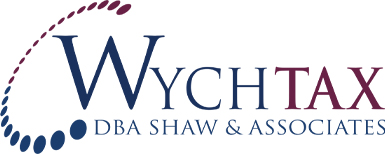Optimizing Your Social Security Retirement Benefits
Social Security continues to be a confusing topic for many trying to plan their retirement. This month we hope to clear up the cluster of information in order to help you work towards making the most of your Social Security retirement benefits — or Primary Insurance Amount (PIA). We aim to provide you a little more financial peace of mind ahead of retirement.
To use as a reference as you read, we have included the following definitions:
- Primary Insurance Amount (PIA) — The amount a person will receive when he/she collects Social Security retirement benefits.
- Average Indexed Monthly Earnings (AIME) — The formula the Social Security Administration uses to determine the size of a person’s PIA.
- Full Retirement Age (FRA) — The age in which a person can receive 100% of your PIA. Age of full retirement is based on your date of birth.
The Basics
When it comes to collecting social security for retirement, you essentially have three options: early retirement, full retirement, or delayed retirement. In order to qualify for retirement benefits, you’ll need at least 10 years of work experience or 40 credits. The amount needed for one credit in 2016 was $1,260 — and it is only possible to earn four credits per year. The amount you will receive from the Social Security Administration is based on AIME, which is primarily based on 35 years of your highest income as well as factors like inflation. It’s important to know that your zero income years are included if you have not worked at least 35 years. How exactly the government calculates your AIME is extremely complex, so we recommend using the calculator provided at the Social Security Administration’s website to get an accurate estimate.
Early Retirement
You can begin receiving retirement benefits as early as 62, but is not often advised because you won’t be eligible for your entire PIA. For example, an individual whose FRA is 66 and starts collecting at age 62 will see a 25% reduction in their benefits — also called PIA. Still, around 40% of eligible individuals begin claiming their benefits as soon as they become available. Here are a couple examples why early retirement might be right for you:
Longevity
While this is not the most joyous topic to consider, it is still very important. If you have questionable longevity past your retirement age it is not viable to wait for the extra money. Instead, you may want to claim your benefits early. However, something to take into consideration when choosing this option is whether or not your spouse will claim your benefits in the future. It’s critical to determine if they will be financially secure with your reduced amount. We will further discuss functionality of spousal benefits later in the article.
It’s Just Time
If you are reaching a point where going to work is barely manageable and you feel you have put your time in, there’s no shame in claiming early retirement benefits. You should calculate whether the reduced benefits package is still a financially sustainable option to retire the way you’ve planned. If it all checks out, then why not?
Full Retirement Age (FRA)
Your FRA age depends solely on your date of birth. FRA was originally 65 when social security was created but has been steadily increasing. Those born before 1938 have a FRA of 65, but those born in 1960 or after have a FRA of 67 — and still increasing. FRA is a very viable option because the benefits are higher and you won’t be subject to a reduction on your hard-earned PIA if you decide to stay employed.
Delayed Retirement
This option is the most financially beneficial but you must weigh a series of options before heading down this path. For example, if you were born after 1943 and you delay your retirement, you will see an 8% annual increase in your PIA benefits — or two-thirds of 1% each month. This means if you can wait until you’re 70, you will have grown your PIA to 132%. Waiting may seem like a daunting idea for many reaching the end of their careers, but you aren’t required to be employed if you wish to delay claiming your PIA. If you can financially sustain yourself without the PIA benefits, you should delay claiming in order to accrue more value until it’s imperative to access your retirement income. You may consider putting away more savings and setting yourself up for the extra benefits of delayed retirement, but first consider how beneficial they may — or may not be — to your end goal.

Other Considerations
Your Spouse’s Benefits
If your spouse has a significantly higher income than you, you are entitled to 50% of their PIA. Keep in mind, if you begin taking your spouse’s benefits before you have reached your FRA, your spouse’s PIA will be permanently reduced — even if they retire at or past their FRA. Additionally, if you are no longer married and your ex-spouse is living, you can still receive 50% of the benefits if:
- Your marriage lasted 10 years or longer
- You’re unmarried
- You’re age 62 or older
- The benefit you’re entitled to receive based on your own work record is less than the benefits you’d receive based on your spouse’s work record
Finally, although not ideal, if you outlive your spouse in retirement you are entitled to 100% of your spouse’s benefits if their PIA was larger than yours.
Claiming Early Retirement While Still Employed
If you begin claiming your Social Security benefits before your FRA and you’re still employed, your benefits may be subjected to adjustments and you may need to repay some — or all — of your benefits back. If your earnings exceed $17,040, which is the yearly limit for 2018, your benefits would be further reduced $1 for every $2 you make over the limit in addition to your already reduced PIA. However, once you reach your FRA, there is no limit on your income and no potential repayment.
Taxes After Reaching FRA
Once you reach FRA, your benefits are no longer subject to a reduction if your earned income surpasses the earnings limit, but your benefits package may still be subjected to taxation as any other income would. Those filing as individuals will see their benefits start being taxed if other sources of annual income surpass $25,000. Married couples who file a joint return will start at $32,000. If this income threshold is passed, 85% your benefits can eventually be taxed. With this information, it’s important for those who still have a substantial income in their later years to consider waiting as long as possible to claim their PIA. This way, they can avoid heavy taxation while continuing to grow their PIA in late retirement.
We hope this article has given you some clarity on the many nuances associated with claiming your social security retirement benefits. While it can be incredibly complex to navigate retirement, there’s a financially sustainable path for everyone. Here at Shaw & Associates, we are here to help put you on a path toward making the most of your retirement. If you have any additional questions or concerns, please give us a call and schedule an appointment.

